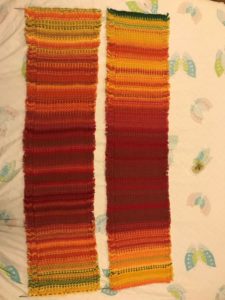
Have you ever heard of or seen a Tempestry? I had not – until this year. In April, an article about the Tempestry Project appeared in one of my Facebook knitting groups. I clicked on the link and was immediately hooked. When I saw the National Park Tempestry Project getting underway, I had to join.
The Tempestry Project is an ongoing collaborative fiber arts project that presents climate change data in visual form through knitted, crocheted or even cross-stitched artwork. The project seeks to create a visual representation of climate change in one location.
Tempestries are produced by knitting or crocheting a single row in a specified color representing the high temperature each day for a year. Multiple works are typically displayed together to show change over time. The project began in 2017 in Anacortes, Washington, US, and has since spread throughout the country and around the world. The name “tempestry” is a blend of temperature and tapestry and describes the finished project.
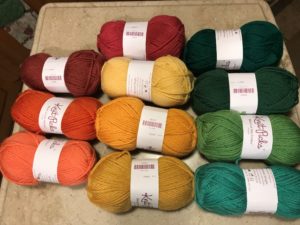
One of the projects incorporating the Tempestry Project is the National Park Tempestry Project. Erika Zambello came up with the idea. She hopes to get two tempestries made for every National Park Site: one for the year the park was founded and one for 2016, the 100th anniversary of the National Park Service. At the beginning of the project (in May) you could sign up for what park you wanted to do. I signed up for Fort Frederica National Monument and Fort Necessity National Battlefield. I could see the list of “taken” parks and saw that San Juan Island, Grand Portage, and Death Valley were already taken.
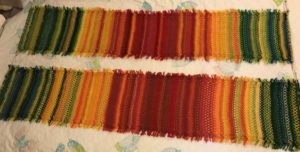
To participate you could order a kit or make your own. Because I was going to be doing more than one tempestry, I decided to make my own. This meant I had to get data from National Oceanic and Atmospheric Administration, getting the high temperatures from weather stations closest to the park. I ordered data for 2016 and for the year the park was founded. Then I ordered the yarn. The specified yarn is Knit Picks Wool of the Andes Worsted Weight. It is available in a wide range of colors and is inexpensive. Once I had the data from NOAA, I knew what colors I needed. Then I started knitting.
The tempestries are knitted one row per day starting with January 1 and finishing with December 31. I did mine in linen stitch, which creates a stiffer, woven fabric. Some people weave all the ends in, but I hate doing that, so I created a fringe for my tempestries. Once you have the tempestries completed, you take pictures of them at the National Park site and send the pictures to Erika. She is putting together a website with the pictures. She hopes to have most of the tempestries completed by the end of 2019.
I started with the Fort Frederica tempestries – 1945 and 2016. When I finished them, I mailed them to Ranger Michael who took pictures of them in the park. He got creative with them and ended up with some wonderful pictures. Then I went on the Fort Necessity tempestries – 1932 and 2016. Because we are at Fort Necessity, I was able to take the pictures myself.
I completed the tempestries in August, so I immediately signed up for another park: Kings Mountain National Battlefield. Now I just have to complete those and get the pictures taken before the end of the year.
I have really enjoyed being part of the National Park Tempestry Project. I am looking forward to seeing the display of all the finished tempestries. You can see a “place saving” website with some of the completed tempestries here. If you would like to knit (or crochet) a National Park Tempestry Project, you can contact Erika at this address: nationalparkstempestry@gmail.com.


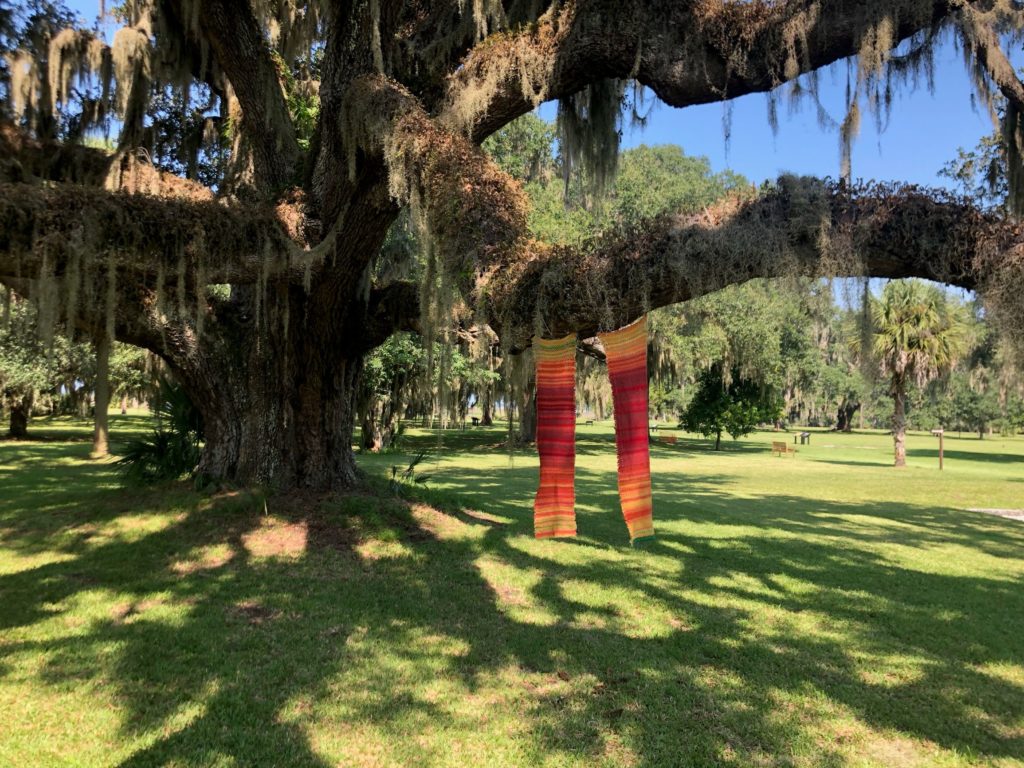
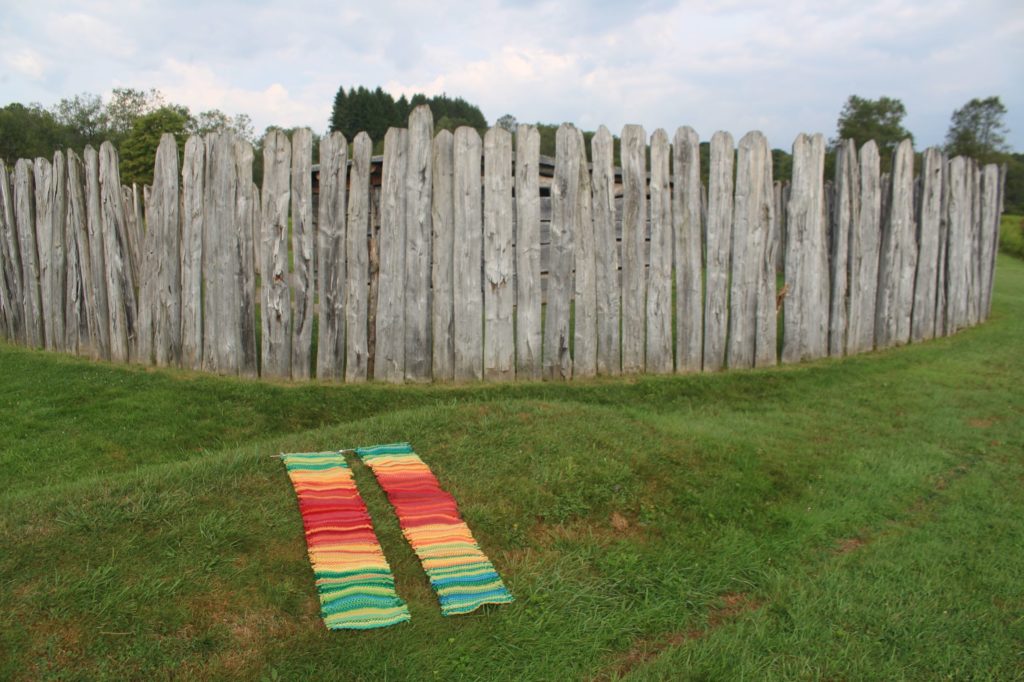
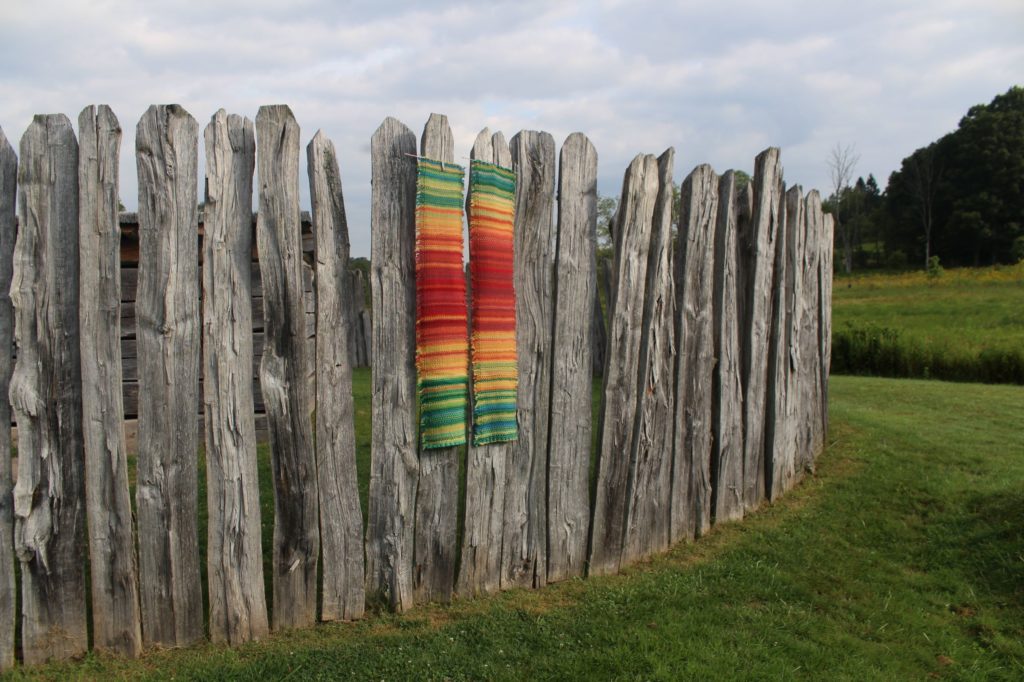
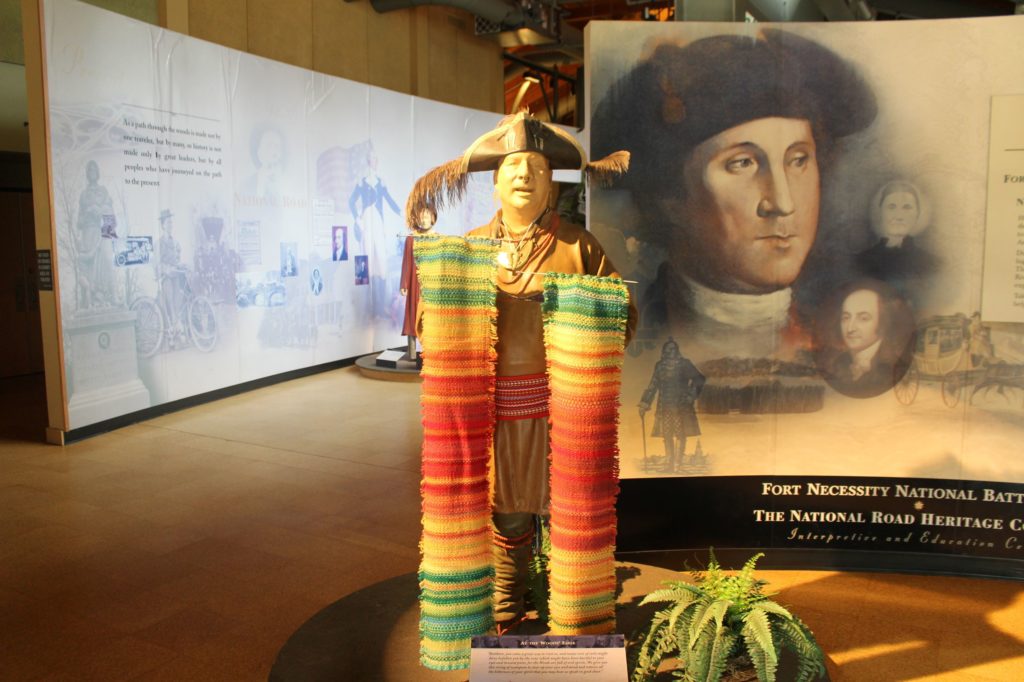
What a clever idea and the end results are beautiful!
Thank you. I have been knitting them at work and it is a great way to open a conversation with people about climate change.
Pikes Peak has big changes, probably because it has a larger spread between years. Very cool project.